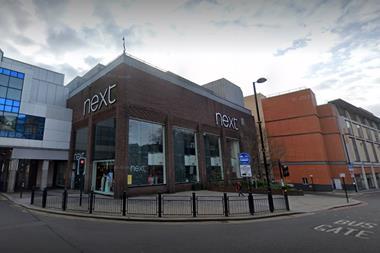Two striking headlines stand out in my inbox.

The first, from Savills, relates to research suggesting the UK has 142m sq ft of vacant retail space – 12.6% of the total stock – and that this will rise to 25%. Then one from CBRE saying Covid has accelerated ecommerce growth by five years in much of Europe.
The juxtaposition of bricks-and-mortar and online retail is summed up in those contrasting statements. One produces redundant premises and the other demand for warehousing to fulfil local deliveries in urban centres. Couple that with the chronic shortage of industrial land due to its loss to residential use over the past decade and isn’t it obvious to connect the dots and make one the solution to the other?
In the US, obsolete shopping centres in Atlanta, Baltimore, Chicago and Detroit are to be rebuilt as warehouses; 13.8m sq ft of retail will be converted to 15.5m sq ft of industrial space.
However, CBRE’s global head of industrial and logistics research, David Egan, says: “Many conversions are more challenging to execute than it might seem, given that the developer/owner of each site often needs to get a wide group of stakeholders to agree on a fairly dramatic change.”
It is those challenges that lead us to conclude there will be some, but by no means extensive, activity in this area in the UK.

Out-of-town retail is the most obvious candidate for conversion, with edge-of-town locations, ample site areas and plenty of people living nearby. We have already seen the conversion of an ex-Toys R Us unit in Croydon and the purchase of a north London retail park by Amazon.
As well as these strengths, there are also weaknesses to conversion projects. With yields of 3.5% to 4% and rents often at £20/sq ft, urban logistics would appear to steal a march on a retail park facing falling rents and with higher yields.
But the best potential urban logistics sites are often the strongest retail centres, and retail parks are undergoing a renaissance during Covid, with shoppers favouring open-air, car-accessed, large-store format centres over town centres. So, while sales at Next’s out-of-town stores are down, they have only fallen 15% compared with 33% in shopping centres and 37% in city centres.
Big investors such as Federated Hermes have spotted a buying opportunity and assets are starting to be traded, probably underpinned by plans for long-term alternative use as residential.
Two further conversion practicalities must be considered: planning consent and vacant possession. Not all local authorities want to lose even failing retail centres, particularly to a logistics use. Tenancies are often long term, with struggling retailers peppered around successful ones, making phasing and the cost of any redevelopment a struggle.
Poor candidates
As for the high street and shopping centres, both are poor candidates for conversion to large urban logistics facilities, as existing structures and access routes are unsuitable. Residential is a far more likely replacement use.
There will be some click & collect, storage and parcel consolidation opportunities within retail formats.
The experiential nature of physical retail aligned with the convenience of online needs to allow shoppers to try, buy and receive however they choose to.
But the warehousing space to serve these activities will be delivered by larger, purpose-built units in the suburbs, typically adjacent to road connections such as London’s North Circular Road. Our recent estate purchases in Perivale and Canning Town are good examples.
Out-of-town retail is the most obvious candidate for conversion
So, what will be the solution for inner-urban ‘last mile’ or ‘last touch’ logistics provision?
Our recent experience includes the conversion of an old Addison Lee garage in London’s Kentish Town and the intensification of land use on the edge of Paris through a 650,000 sq ft multi-level development leased to IKEA, which uses it to sustainably barge product via the River Seine for distribution by electric vehicles to its flagship store and Parisian apartments.
Also in Paris, we are converting an underground, centrally located, former SNCF railhead into 750,000 sq ft of urban space and made our first purchase of a purpose-built section of a mixed-use scheme, taking the dedicated logistics area within a broader office, hotel and residential scheme.
Retail-to-urban logistics conversion may have some part to play in responding to the acceleration of trends caused by Covid, but there will be other imaginative, innovative and larger-scale ideas flourishing in the warehouse world.
Andy Gulliford is chief operating officer of SEGRO






























No comments yet